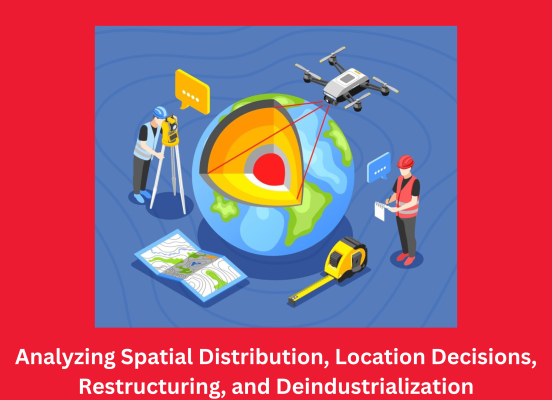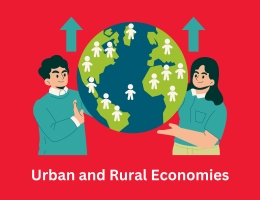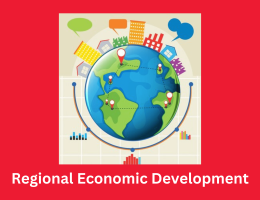
Industrial Geography: Analyzing Spatial Distribution, Location Decisions, Restructuring, and Deindustrialization
- By admin --
- Thursday, 07 Mar, 2024
Introduction:
Industrial geography explores the spatial distribution, organization, and dynamics of industries within geographical areas. This essay delves into the multifaceted aspects of industrial geography, examining the factors influencing industrial location decisions, the process of industrial restructuring, and the phenomenon of deindustrialization.
Spatial Distribution of Industries:
The spatial distribution of industries is influenced by a myriad of factors, including access to raw materials, labor availability, transportation networks, market proximity, and government policies. Certain industries tend to cluster together in specific regions due to agglomeration economies, knowledge spillovers, and supply chain efficiencies. For example, the automobile industry in Detroit and the tech industry in Silicon Valley are emblematic of industrial clusters shaped by historical, economic, and geographical factors.
Factors Influencing Industrial Location Decisions:
-
Resource Availability: Industries often locate near sources of raw materials or key inputs to minimize transportation costs and ensure a steady supply chain. For instance, steel mills are typically situated near iron ore deposits, while semiconductor manufacturers may cluster near semiconductor fabrication facilities.
-
Labor Market: Access to skilled labor, wage levels, and labor regulations play a crucial role in industrial location decisions. Industries requiring specialized skills or knowledge may gravitate towards regions with a well-educated workforce or robust training programs.
-
Infrastructure and Transportation: Efficient transportation networks, including highways, railways, ports, and airports, are essential for facilitating the movement of goods and inputs. Industries reliant on timely delivery or just-in-time manufacturing may favor locations with superior transportation infrastructure.
-
Market Access: Proximity to consumer markets and suppliers influences industrial location decisions, as industries seek to minimize distribution costs and respond quickly to changing market demands. Urban areas with dense populations often attract consumer-oriented industries, while rural areas may be favored for industries requiring large land parcels or less stringent zoning regulations.
Industrial Restructuring:
Industrial restructuring refers to the process of adaptation and transformation within industries in response to changing economic, technological, and market conditions. Several factors drive industrial restructuring, including globalization, technological innovation, market competition, and shifts in consumer preferences. Key aspects of industrial restructuring include:
-
Technological Innovation: Advances in technology, automation, and digitization have revolutionized industrial processes, leading to increased productivity, efficiency gains, and changes in workforce composition. Industries that fail to adopt new technologies risk obsolescence and decline.
-
Globalization and Outsourcing: Globalization has facilitated the internationalization of production networks, supply chains, and markets, leading to the outsourcing of manufacturing and service activities to low-cost regions. Industries facing intense global competition may undergo restructuring to remain competitive or exploit new market opportunities abroad.
-
Industry Consolidation and Mergers: Economic pressures, market saturation, and industry consolidation have led to mergers, acquisitions, and restructuring within various sectors. Consolidation can result in economies of scale, enhanced market power, and rationalization of production capacity.
Deindustrialization:
Deindustrialization refers to the decline or contraction of manufacturing industries within a region or economy, often accompanied by job losses, urban blight, and economic restructuring. Factors contributing to deindustrialization include:
-
Economic Shifts: Structural changes in the economy, such as the transition from manufacturing to services or the rise of the knowledge economy, can lead to the decline of traditional industrial sectors.
-
Global Competition: Intensified global competition, particularly from emerging economies with lower production costs, can erode the competitiveness of domestic industries, leading to factory closures and outsourcing.
-
Technological Displacement: Automation, robotics, and artificial intelligence have displaced manual labor and reduced the demand for certain manufacturing jobs, contributing to deindustrialization in advanced economies.
Conclusion:
In conclusion, industrial geography provides insights into the spatial distribution, organization, and transformation of industries within geographical contexts. Understanding the factors influencing industrial location decisions, the process of industrial restructuring, and the phenomenon of deindustrialization is essential for policymakers, businesses, and communities seeking to navigate the complexities of industrial change, promote economic resilience, and foster sustainable development in an increasingly globalized and technology-driven world.





